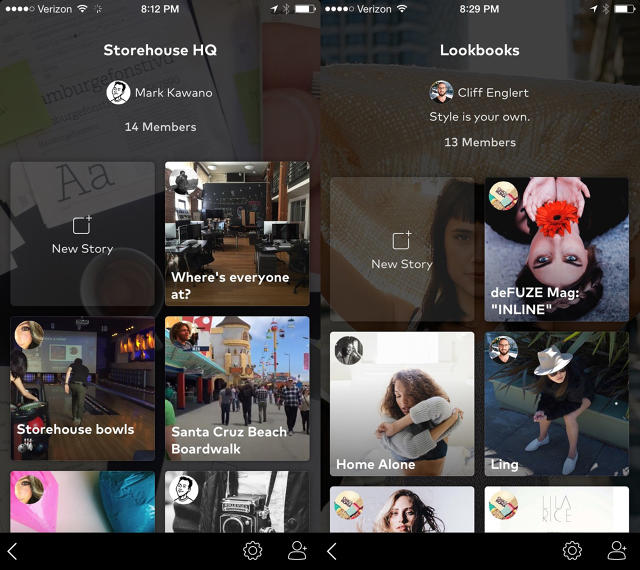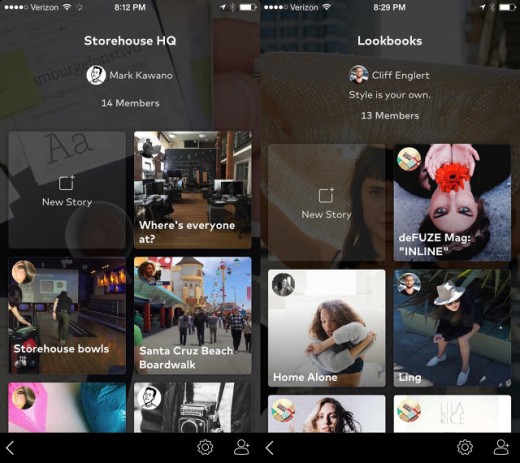Why One Social community just grew to become Off Followers And Hashtags
Storehouse, a cellular publishing community by using an ex-Apple dressmaker, has determined that followers create pandering, and pandering ruins the whole thing.
September 23, 2015
When the iPad app Storehouse launched in early 2014—designed to be able to post brief, uniquely laid out, picture-driven tales with the arena—it operated with all the flourish you’d predict an app led through an ex-Apple designer to have. the company used to be based by using Mark Kawano, who had worked on iPhoto and served as Apple’s consumer experience evangelist before founding his company, and it showed.
I gushed over the smallest UX touches of the preliminary product—although criticized its lack of evident social options (there was a generalized information feed, however no hashtags or followers). Predictably, their subsequent variations integrated these social network mainstays, and Storehouse’s sharing core changed into roughly like that of every other social community in the market.
however with Storehouse 2.zero—out nowadays for iOS—Kawano is doing an about-face. the new app has no feed. It has no followers. And it has no hashtags. the whole lot about discoverability and sharing has been removed. instead, each story you create is personal by using nature. that you may textual content and email it to friends. Or that you could location it in a shared “space,” the place you can drop in tales for a small staff of chums to apply.
Why the trade? “Like various social networks, people started sharing to get likes, to get follows, to get suggestions,” Kawano says, “slightly than why we intended it, to create these tales.”
that you could edit tales for yourself, explicit friends, or individuals of your family. Then if you want to, which you could nonetheless blast a narrative out over facebook and Twitter, however Storehouse itself won’t promote these large-internet social performs inside its own product, enabling you to develop into the kind of brute-drive celebrities we see on Instagram, Vine, and Twitter.

“by using eliminating the practice version, it’s way more a product that displays the best way folks normally engage with each different,” Kawano says. “[Previously on] Storehouse, any person would exit, take a whole bunch of gorgeous images on trip, share them, get revealed, and get a complete bunch of followers. Which is superb for that particular person! but then, they’d have this thing more they need to share, and they have an entire bunch of followers they be aware of are excited about beautiful trip photos. and they’re like, ‘neatly, do I post this? It’s non-public.’ Or, ‘this can be a bizarre story. It’s going to indicate a much more ingenious side.'”
What Kawano is regarding is an unusual, presumably underexplained social network phenomenon. a variety of us pander to the group—and Storehouse had no scarcity of that. but the motivations weren’t fairly so simple as casting off tacky self-promoters. A platform like fb incorporates household, pals, and pals. We tend to take a look at these social circles primarily as levels of privateness, asking, who’s shut enough to see photographs of our children or hear information of losses in our household? but privateness is just one aspect of how people have interaction. when we walk into the place of business on Monday, we don’t simply yell out to everyone that we made a steak the evening before—we ask ourselves, who’d in truth be keen on what I made for dinner? after which we nook them in a cubical whereas waxing in regards to the merits of artfully prepared ribeye.
“the reality is, you have a look at your camera roll, and the issues that are in there [prove] individuals are multidimensional, and you don’t have a single set of frames that in shape up with [everyone else’s tastes],” Kawano says. Storehouse 2.0 desires to support these components of your character across your social sphere. “I’ll share the meals pictures with chums i do know will savour the meals stuff, and photos with my children, I’ll share that with household and chums who care about my youngsters.”
after I ask Kawano if terrible subscriber trajectories could have accounted for this sudden pivot, he insists that Storehouse had great engagement numbers that “most firms at our stage would like to have.” reasonably, people weren’t the usage of the product in the way it was once initially meant, he says: to inform genuine stories, moderately than tales destined to head viral.
(92)














